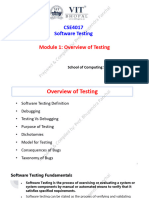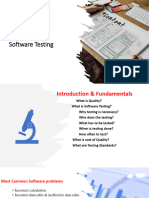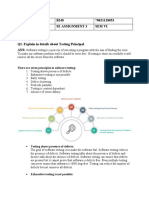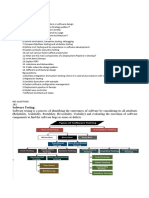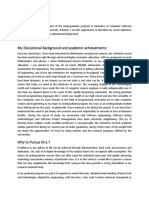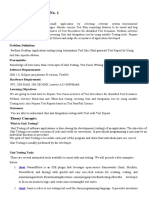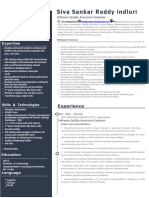0% found this document useful (0 votes)
9 views34 pagesSoftware Testing
Software testing is the process of executing a program to identify errors and ensure it meets specified requirements through verification and validation. It includes various types such as black box, white box, and grey box testing, as well as levels like unit, integration, system, and acceptance testing. Additionally, non-functional testing evaluates aspects like performance, usability, and security to ensure the software is reliable and user-friendly.
Uploaded by
ramsha.qureshiCopyright
© © All Rights Reserved
We take content rights seriously. If you suspect this is your content, claim it here.
Available Formats
Download as PPT, PDF, TXT or read online on Scribd
0% found this document useful (0 votes)
9 views34 pagesSoftware Testing
Software testing is the process of executing a program to identify errors and ensure it meets specified requirements through verification and validation. It includes various types such as black box, white box, and grey box testing, as well as levels like unit, integration, system, and acceptance testing. Additionally, non-functional testing evaluates aspects like performance, usability, and security to ensure the software is reliable and user-friendly.
Uploaded by
ramsha.qureshiCopyright
© © All Rights Reserved
We take content rights seriously. If you suspect this is your content, claim it here.
Available Formats
Download as PPT, PDF, TXT or read online on Scribd
/ 34



















